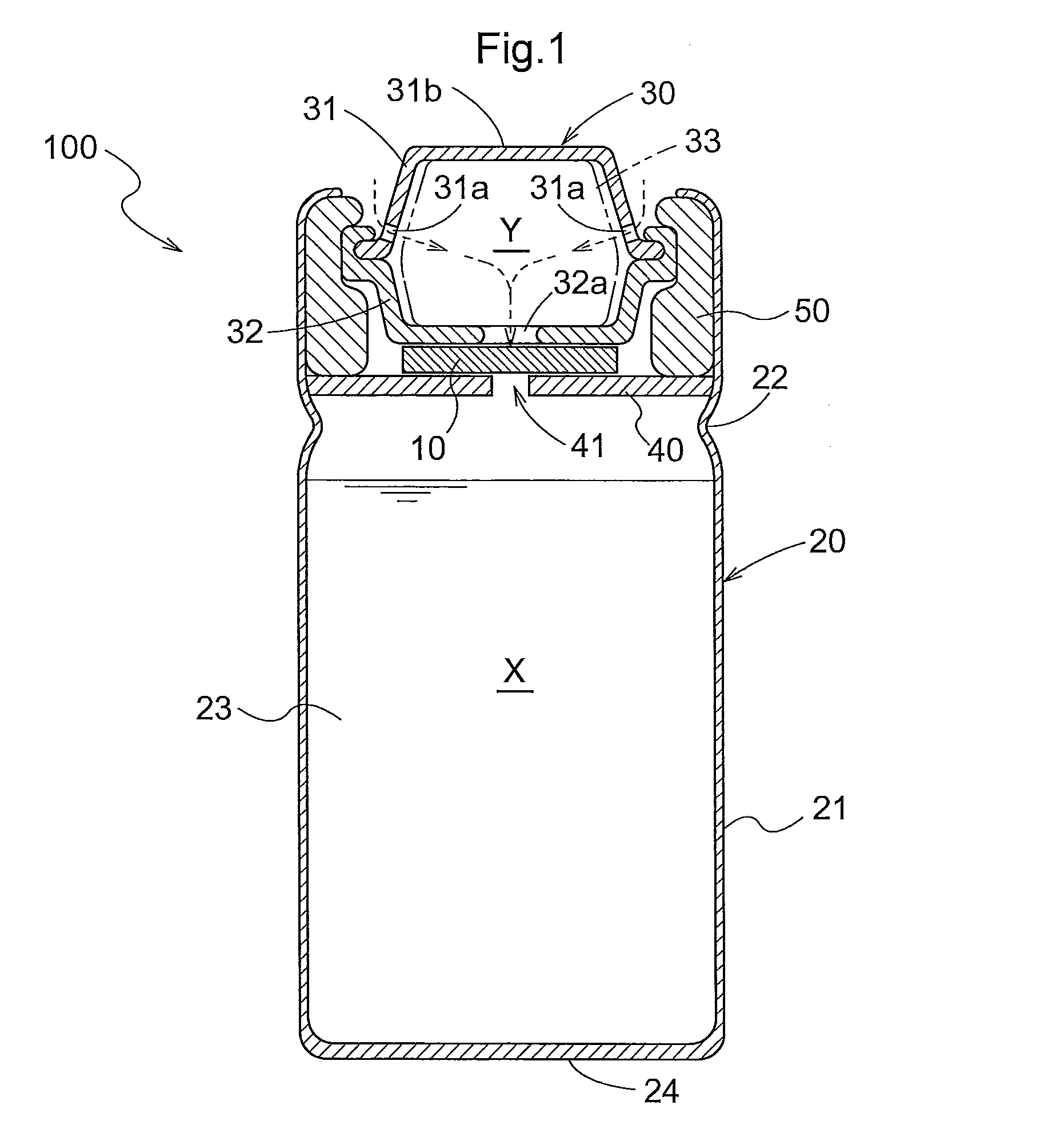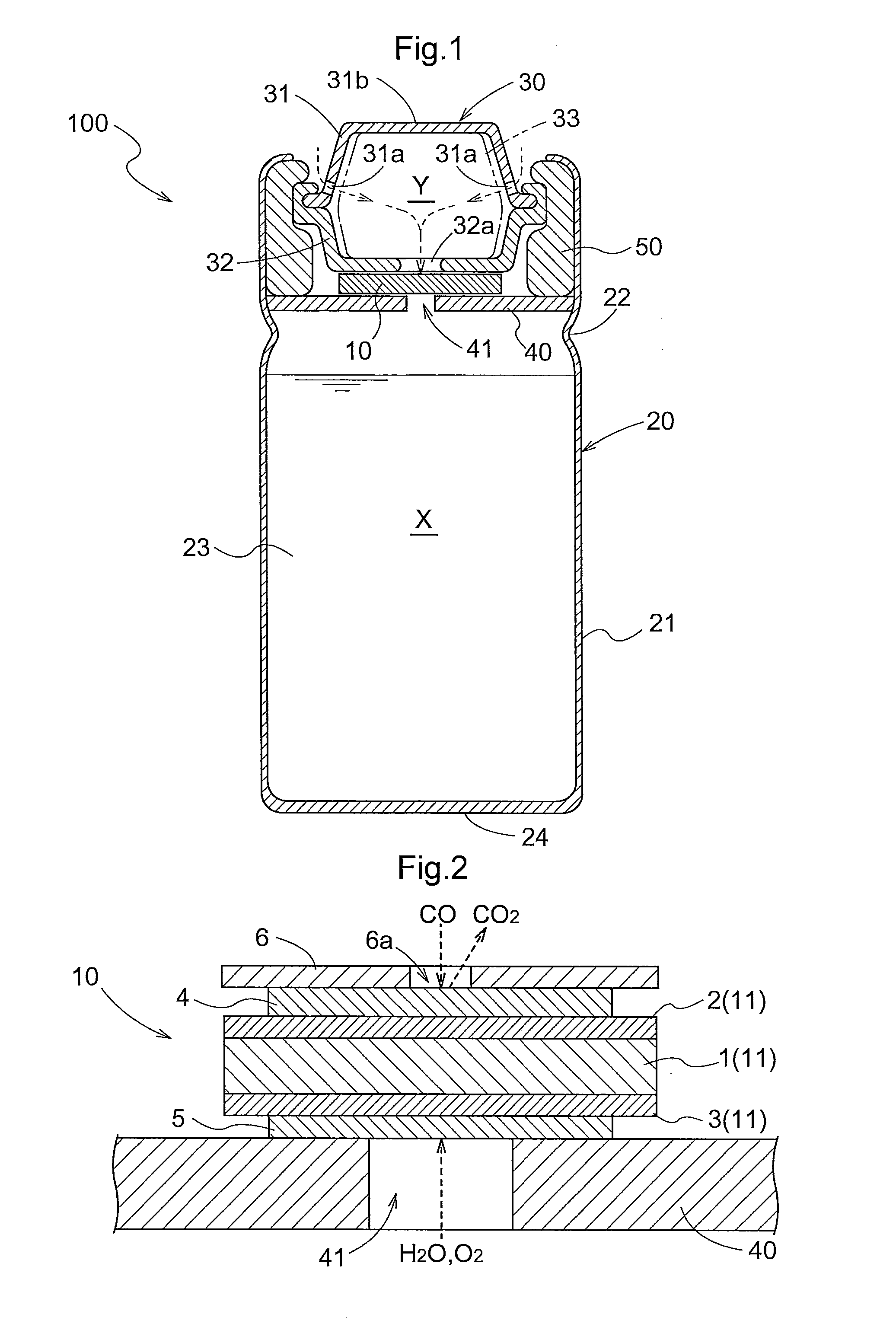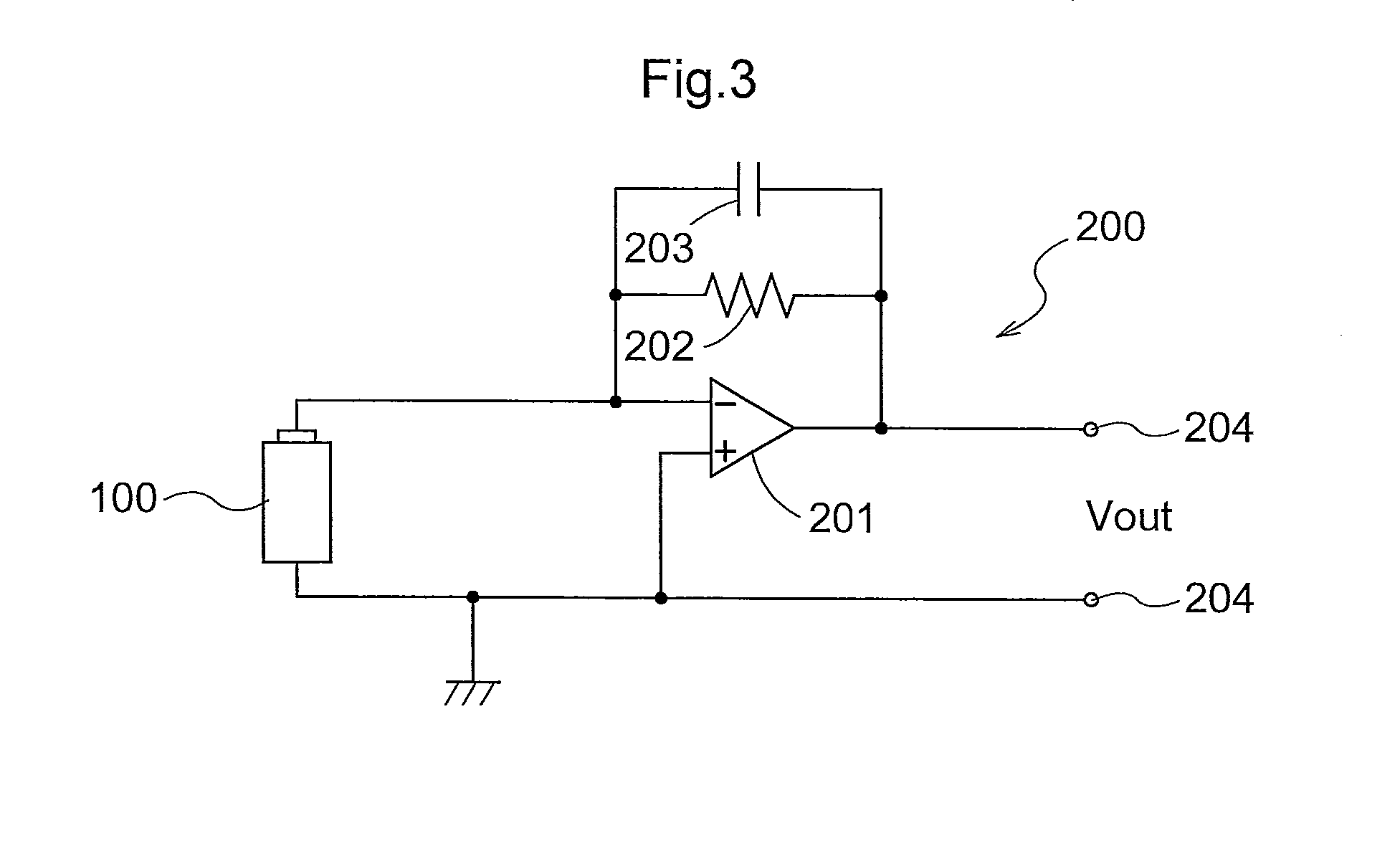Method and apparatus for diagnosing electrochemical sensor
a technology of electrochemical sensor and diagnostic method, which is applied in the direction of resistance/reactance/impedence, instruments, measurement devices, etc., can solve the problems of inability to ensure high reliability, inability to accurately detect gas to be detected, etc., to achieve accurate reflection of resistance component (impedance), and reduction of conductivity in the electrolyte
- Summary
- Abstract
- Description
- Claims
- Application Information
AI Technical Summary
Benefits of technology
Problems solved by technology
Method used
Image
Examples
first embodiment
[0086]The sensor means 11 in the sensor unit 10 of the electrochemical sensor 100 is formed by connecting the anode 2 and the cathode 3 to the two sides (top and bottom) of the electrolyte layer 1 as shown in FIG. 2, but the sensor means 11 can be considered as corresponding to an equivalent circuit such as shown in FIG. 6. Specifically, the anode 2 is equivalent to a parallel connected configuration of a reaction resistor R2 and a capacitor (electric double layer capacitor) C2, the cathode 3 is equivalent to a parallel connected configuration of a reaction resistor R3 and a capacitor (electric double layer capacitor) C3, and the electrolyte layer 1 is equivalent to a resistor R1. Therefore, the sensor means 11 corresponds to an equivalent circuit in which the parallel connected configuration of the anode 2 is connected in series to the parallel connected configuration of the cathode 3 with the resistor R1, which is the electrolyte layer 1, in between.
[0087]By having an alternating ...
second embodiment
[0102]In the first embodiment described earlier, the diagnosing means 306 diagnoses whether or not a sensor is in an error state according to whether or not the impedance of the electrolyte layer 1 increases when an alternating current is applied. When a pulse rectangular voltage is applied instead of an alternating current, however, the output voltage of the electrochemical sensor corresponds to the impedance of the electrochemical sensor. Therefore, whether or not a sensor is in an error state can also be diagnosed by intermittently detecting the impedance of the electrochemical sensor when an alternating current is flowing by detecting the output voltage of the electrochemical sensor when a pulse rectangular voltage is applied.
[0103]A more detailed description now follows. As shown in FIG. 8, the diagnostic apparatus 300 comprises a load resistor 301 (for example, a 1 kΩ load resistor) and an electrochemical sensor 100 connected in series, power source means 302 for applying a co...
PUM
 Login to View More
Login to View More Abstract
Description
Claims
Application Information
 Login to View More
Login to View More - R&D
- Intellectual Property
- Life Sciences
- Materials
- Tech Scout
- Unparalleled Data Quality
- Higher Quality Content
- 60% Fewer Hallucinations
Browse by: Latest US Patents, China's latest patents, Technical Efficacy Thesaurus, Application Domain, Technology Topic, Popular Technical Reports.
© 2025 PatSnap. All rights reserved.Legal|Privacy policy|Modern Slavery Act Transparency Statement|Sitemap|About US| Contact US: help@patsnap.com



